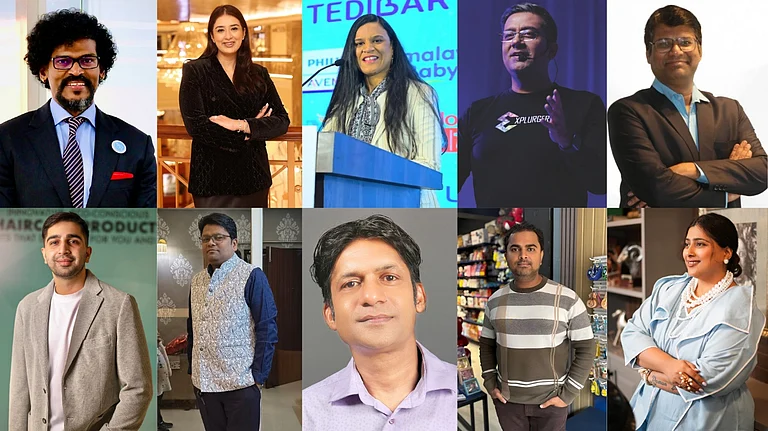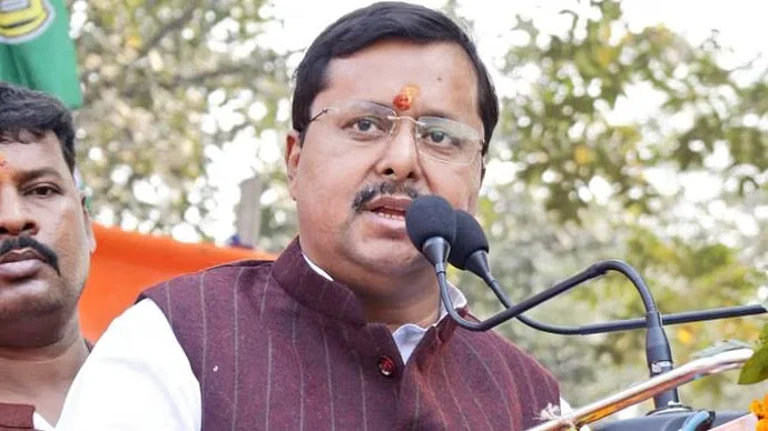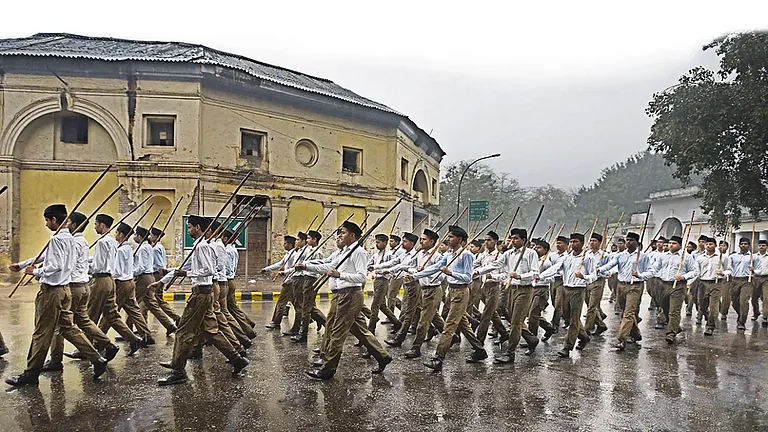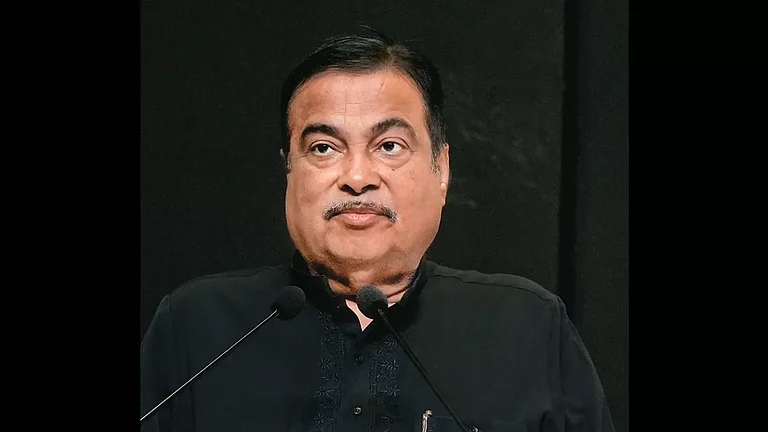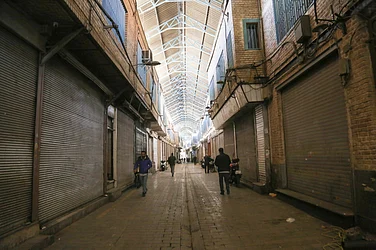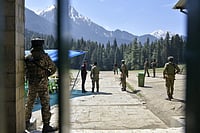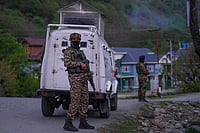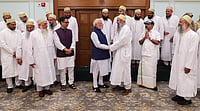Nagpurkars hold as much pride towards the ‘son of the soil’, Union Minister Nitin Gadkari, as they do with the district’s other two famed symbols of oranges and tiger. Gadkari, 66, is a rare political figure who despite rising from the ranks of the Rastriya Swayamsevak Sangh, is respected and admired equally by the masses and rival parties for his development work.
The Nagpur constituency is a stellar proof of Gadkari’s work as minister for road transport and highways, a portfolio, he has held continuously since 2014. Over 90 per cent of Nagpur’s 3549 km of road network under the Nagpur Municipal Corporation has been developed with high-quality concrete surfaces that are well connected with interior roads and gullies, footpaths and stormwater drain, flyovers, metro lines and zero-emission electric buses.
Rickshaw and taxi drivers sing high praises and thank him daily as they zoom across the smooth roads, which people in Mumbai can only dream of. “Ten years ago, even we couldn’t imagine, Nagpur’s development at this level,” says driver Jitendra Barapatre. “Earlier, the roads were filled with potholes and broken patches, it was a nightmare to drive. The Pardi flyover was under construction for 10 years, but Nitin ji got it done in three years.”
The roads and transport ministry were considered “less attractive” to the other powerful Cabinet positions, he was eligible for. But Gadkari is believed to have insisted on taking it over. During his tenure, he boosted the country's road construction rate from 2 km/day to 30 km/day and the speed of highway development to 36 km/day, which he has further vowed to increase to 68 km/day with a target of 25000 km by 2022–2023.
Tall tales of Gadkari’s work and indomitable spirit are on everyone’s lips.
Born in 1957 to Jairam and Bhanumati Gadkari, he is the youngest of three children. The Gadkaris belonged to a modest but upper-caste Deshastha Brahmin family. His father was a farmer and tilled the family’s land in Dhapewada village, 20 km on the outskirts of Nagpur.
His two sisters were older and married, whereas his father would be busy with farming, so naturally, Nitin would accompany his mother everywhere, says Parafulla Dutt Jamdar, 67, a close friend who has known Gadkari from the age of 11-12 years old. The two attended different RSS Shakhas but played games and participated in Sangh’s activities around the Mahal area, where Nitin was raised and went to school.
Jamdar describes, Bhanutai as a versatile woman who was “affectionate, disciplined and frank,” and known for her “unparalleled” work in the social field. “Every good development in Nagpur be it in social, cultural or religious spheres, has been influenced and shaped by her involvement. In those days, there were limited amenities and resources with people, but she took the lead in several activities of Jan Sangh. She organised yoga classes and study groups for children and ensured they attended it.”
Girish Gandhi, a veteran Congress worker and social activist, admires Gadkari despite hailing from the opposition party and ideology. Gandhi, 76, taught Gadkari at the DD Nagar Vidyalaya in the Mahal area, one of the oldest schools in Vidarbha, where many Sangh leaders including founder Keshavrao Hedgewar, Barrister Vasantrao Naik and other prominent political and social figures from Nagpur studied in the past. He remembers Gadkari as a sharp student from his school days, a trait that has helped him to immersive gain technical knowledge and bring innovations in public infrastructure development.
As a devoted Swayamsevak, Gadkari’s career in public service began from a young age through his involvement in Sangh’s day-to-day activities. During his college days, he began to take a keen interest in political work. In the early 1970s, after Madhukar Dattatreya Deoras became the RSS chief, Sangh overtly engaged in political activities and supported Jayaprakash Narayan's movement against Indira Gandhi. Gadkari also took a similar route and ran for the presidency of the university students' union. He lost by six votes, but his failed student political career was quickly resurrected after he became the President of the BJP’s youth wing Bhartiya Janata Yuva Morcha, in Nagpur.
Bharatiya Jana Sangh leader Gangadhar Rao Fadnavis (father of Maharashtra’s deputy chief minister Devendra Fadnavis) became a political mentor to Gadkari. After his demise in 1987, Gadkari contested his seat at the Graduate constituency and won legislative council elections for four consecutive terms. “After that, he went on to climb the political ladder and has never looked back,” Gandhi says.
In 1995, the Shiv Sena-BJP alliance came to power for the first time in Maharashtra and Gadkari was chosen to head the Public Works Department ministry. His tenure is remembered for the ambitious road projects, for construction of flyovers in Mumbai and for reshuffling the ministry to develop infrastructure.
The blueprint of his later success as a Union Road and transport minister was seen when he became the youngest minister in Maharashtra at the age of 38 years, Jamdar says. “He introduced the Build Operate and Transfer (BOT) concept which was not in practice anywhere in the country at the time. The infrastructure built worth thousands of crores through private partnership.”
Gadkari's tenure as minister of public works granted him a platform to showcase his skills on a national level. In 2000, when Vajpayee implemented a flagship plan to extend road access to rural areas, Gadkari was named the chairman of the National Rural Road Development Committee. Even though he has been a staunch BJP leader, Gadkari shares an excellent rapport with opposition leaders in Maharashtra and Delhi. He is known to approve road infrastructure projects in constituencies of opposition parties, which will not benefit the BJP, a quality that has won him more respect and friends than his rivals.
His close acquaintances and associates believe Gadkari’s core values of being in public service and devotion to social welfare, is a trait that has come from his Sangh background. He is unlike other politicians who make tall promises but turn the other way after attaining high-profile posts.
Jamdar recalls the time around 1996-97 when Sangh had organised a Mahashibir in Khapri locality. Over 10,000 representatives from across the country were scheduled to arrive. However, unseasonal rainfall and storm wreaked havoc and the function was on the verge of being cancelled. “In those days there were no contractors and Swayamsevaks would set up the tent and make arrangements. When this information reached Nitin, he got all the arrangements done and stayed at the camp with us for all three days even was a minister in the Maharashtra government.”
Even now for Sangh’s Dussehra festival, he wears Sangh’s uniform of Khaki short pants and white shirt and attends the foundation day function with other Swayamsevaks, Jamdar says. In 2009, Gadkari became the youngest president of the BJP, which many say was due to his proximity with Sangh leaders. Ahead of the 2014 elections, he was removed from the post following corruption allegations.
His vision of development is large. But more than that his behaviour and thinking reflect a humanitarian approach,” Gandhi adds. “He has helped hundreds of people across the party lines including those who are not BJP supporters, from the smallest to the tallest. Nitin was the first leader who saw the struggle of cycle rickshawallas and introduced e-rickshaws in Nagpur.”
For the people of Nagpur, Gadkari’s rise as a Sangh Swayamsevak from the Mahal area to the popular leader of Modi's cabinet in Delhi is aspirational and admirable. Rumours are rife, that Gadkari has a good chance of becoming prime ministerial candidate after Modi.
His house in Mahal, a popular landmark, is currently being renovated into a seven-floor structure, which locals joked upon completion would be Nagpur’s mini version of Antilla, industrialist Mukesh Ambani’s swanky tower in Mumbai.
Gandhi feels Gadkari has won two terms on the strength of his personal stature, which he compares to that of former prime minister Atal Bihari Vajpayee. “After Vajpayee, I do not know of any other political leader except Nitin who is as dilkhulas (open-hearted) and liberal,” he says.
“If there was any other leader from the BJP in his place, they could not have won the election for the second time. And he will win this election as well with a handsome margin.”
As he addresses voters in the last phase of campaigning before the polling on April 19, Gadkari lays forward the itinerary of his achievements and development vision. I’ve never discriminated on the basis of caste and religion, I do not see if a person is a Hindu or a Muslim, he says. Gadkari refered to the construction work of a bridge in the Muslim-dominated Mominpura connecting to Kamptee road. “My party workers asked me why was I making a bridge in the area from where I won’t get any votes, they told me to construct it in another locality from where I will benefit. I told them, I do not want to do such politics: joh vote de uska bhala, jo na de uska bhi bhala (good for those who vote for me, good for those who don't vote for me as well)







